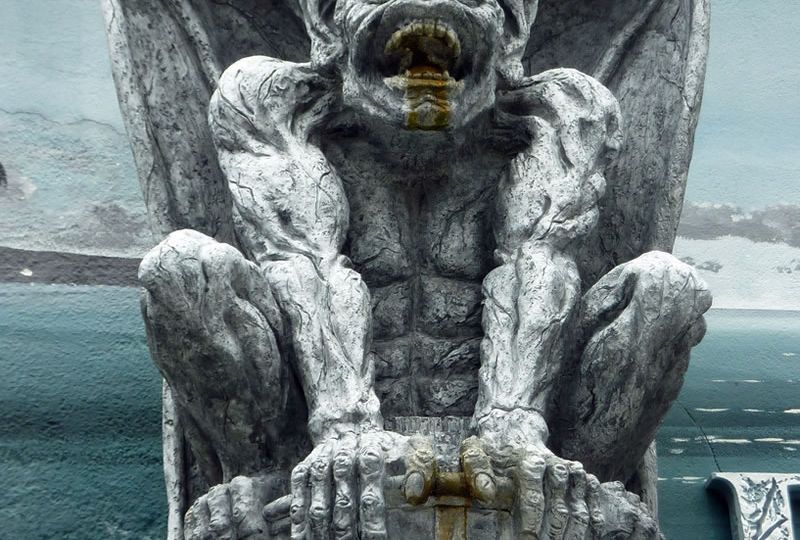
Hello again and welcome to another installment of Shocktoberfest. In today’s article, we’re going to do things a little differently. We’re going to go back into history and look at an older monster, but this one in particular is different in a few important ways. Without further ado, let’s jump in and take a look at gargoyles.
It’s important to note that while many legends and myths have been circulating about gargoyles, what sets them apart from most of the monsters this month is that they actually do exist, although not in the way the stories say they do. While having been used as gutters and water spouts since the time of the ancient Egyptians and Greeks, the term “gargoyle” did not start getting widely used until the medieval era when gargoyles began to be commonly used as decorations for the churches and cathedrals of Europe. Their horrifying appearances of unnatural melding of human and animal features were typically meant to serve two purposes. Primarily they were meant to be a visual representation of the concept of evil to the largely illiterate masses of the time. Their second reason for being so grotesque was to scare away any would-be evil spirits trying to enter the church. To put it bluntly, the Catholic Church put them around the building with the intention to keep heaven in and hell out.
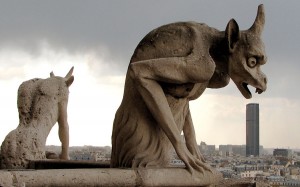
That’s what also sets them apart from any other monster this month: they here to serve as guardians. Since the advent of the printing press, illiteracy has not been the problem it once was for the Western World, so over the centuries, the notion of gargoyles acting as defenders against evil has become their most important theme, but according to legend, they didn’t begin that way.
Before we examine the legend that gave us the idea of a living gargoyle, we first should understand what its name means. The word comes from the French term “gargouille” which translates in English to “throat” or “gullet.” Keep that in mind when reading about the legend of La Gargouille.
In 7th century Rouen, a story was told of a serpentine dragon that terrorized boats on the Seine, flooded the French countryside by displacing the river’s water and spewed fire from its throat. To deliver his people from the fell beast, St. Romain [the archbishop of Rouen] subdued the monster out of the river by using a convicted man as bait and after taming it with the power of a crucifix, he and the convicted man captured la Gargouille and brought it back into town to be burned alive. However, its ability to breath fire tempered its neck and head and could not be destroyed. So as means of protecting the church and displaying the awesomeness of God’s power, St. Romain mounted the head and neck of the beast to top of the building. (This is why many gargoyles in medieval architecture are shown to only have half of a body.)
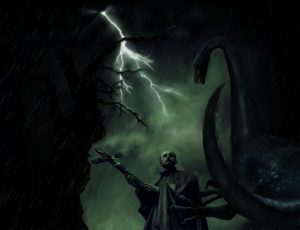
Because of La Gargouille, all gargoyles are immune to fire–of course, being made of stone would also explain that–and most of them have wings, making them appear both angelic and demonic at the same time. Some have come to view gargoyles as fallen angels who’ve been punished with hideousness yet still offer their service to humanity as a mean of redemption. Aside from dragon-like powers, gargoyles are also immune to every disease and are immortal, can camouflage themselves if they need to hide or spring a surprise attack, and according to some myths, they can sometimes take on human form. These traits would come back into play in 1994 when the Disney animation studio released a Saturday morning cartoon series that would go on to create a small but very loyal fanbase.
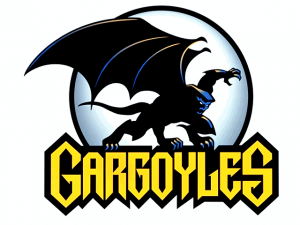
The plot to Gargoyles was pretty basic. A group of gargoyles from Scotland in 994 are awoken in 1994 New York after a curse upon them is lifted. The surviving members come to life at night to protect the city and adjust to their new lives in the modern world. The stories mostly focused on the the leader, Goliath, and his former lover, Demona. Goliath still believes in defending humanity in spite of them smashing most of the gargoyles to death during the day when they couldn’t defend themselves. Demona feels betrayed by humans and now lives for revenge, and despite their conflicting beliefs, they still are torn by the love and respect they have for one another.
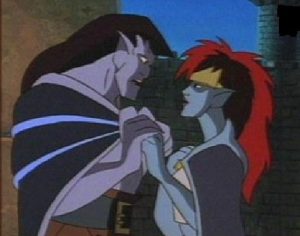
Fun fact: if you like Star Trek, you might also like Gargoyles because aside from being very well written for a children’s series, it also features the voice talents of many former Trek actors. Marina Sirtis and Jonathan Frakes were both regulars on the show–both playing the main antagonists–and others who appeared on the show were Kate Mulgrew, Michael Dorn, Levar Burton, Brent Spiner, Colm Meaney, Avery Brooks, Nichelle Nichols. No wonder it garnered a Trek-like convention that ran from 1997 to 2009.
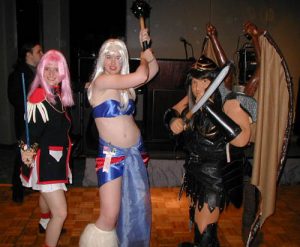
I think the appeal of living gargoyles is akin to the appeal of Hellboy. They’re dire monsters with frightening abilities and physical features, but they’re here to push back against those who would seek to do us harm. And if you happen to be one of the unfortunate people with the intention of doing evil in the presence of the gargoyles…well, nice knowing you.
















another great article. i’ve always been fascinated by gargoyles and their ever-growing mythology. i’m also kinda surprised you didn’t mention batman/gotham at all… or quasimodo from the hunchback of notre dame, though. loving this series and kind of hoping you continue it into november somehow…